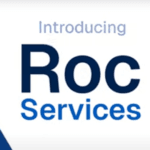
Money moves at an unprecedented pace, and criminals are just as alert. ACH fraud has steadily crept up as one of the most harmful risks for the modern business world, and it is not always done in obvious ways. In fact, many firms have no idea they have been impacted until after the fact.
So, to remain protected, it is critical to understand how ACH fraud occurs, what warning signs to look for, and what measures can be taken to secure your account.
What is ACH Fraud and Why It’s Rising
ACH fraud occurs when criminals get unauthorized access to a business or individual’s bank account through the Automated Clearing House network. The ACH is the system that moves electronic payments between financial institutions.
Unlike wire transfers, ACH payments tend to be perceived as more secure and have therefore become a target for fraudsters. Once fraudsters access an account, steal your payroll credentials, or impersonate a vendor to redirect payments to their own accounts. Since ACH transactions are processed in bulk batches, it may take a number of days for you to recognize there is fraud occurring and to access support to stop them from disappearing with your money.
As businesses move to a more automated, paperless billing, and remote operations, the ACH fraud attempts have increased year after year, often disguised as legitimate activity.
The Early Warning Signs of ACH Fraud
Early detection of suspicious patterns or indicators can help you mitigate losses overall. Below are the most common red flags that ACH fraud may be unfolding inside your systems.
- Unexpected or unfamiliar payees: Fraudsters often add new “vendors” or fake employees to your payment platform.
- Small test transactions: Criminals will often send low dollar value payments to you (around $1 or $5) to verify initial account access prior to completing much larger withdrawals.
- Payroll glitches: Are employees reporting they did not receive deposits? This can be an indicator ACH fraud is unfolding as it pertains to the payroll side.
- Bank account discrepancies: Even minor discrepancies between your bank and accounting records should be looked into especially when originating within your system.
We can all be proactive about knowing what to look for to avoid the months of financial and emotional fallout.
How to Prevent ACH Fraud
Preventing ACH fraud is about more than a reaction, it is about creating better habits, processes, and awareness throughout your organization. Here is how to keep your payments safe:
1. Enable Dual Control for Payments
Mandate two separate individuals to initiate and approve transactions. This creates accountability and prevents unauthorized payments from being missed.
2. Use Multi-Factor Authentication
Add another layer of security by requiring a second authorization step to access a payment system, such as a phone code or fingerprint.
3. Limit Access Privileges
Have trusted employees with a need to know how to manage ACH payments. Limiting access reduces your exposure to threats both inside and outside your organization.
4. Reconcile Accounts Daily
Reconciling accounts on a daily basis will allow you to quickly detect suspicious transactions so your bank will have time to reverse the unauthorized withdrawal in its window.
5. Train Employees Regularly
Train employees on phishing, spoofing, and bogus vendor emails. Fraudsters attempt ACH fraud through new measures, and most are successful because they caught an employee without knowledge of the newest process.
Common Types of ACH Fraud Affecting Businesses

While every situation is different, the bulk of ACH fraud attempts are related to either payroll fraud or vendor payment fraud.
Payroll Fraud:
Cybercriminals or dishonest insiders change the direct deposit information (especially banking details) where paychecks are sent. Other types of payroll fraud include the creation of “ghost employee”, which are fake profiles the perpetrator receives funds each pay period as a reward.
Vendor Payment Fraud:
Fraudsters impersonate real suppliers and email you the updated “bank details” to divert legitimate payments into their own accounts. Because they use email addresses that appear real, even trained staff can be fooled.
Both types of fraud can siphon funds quickly in slow amounts, catching normal approved payments that often go unnoticed for weeks or even months since it is not tracked as closely.
What to Do If You Suspect ACH Fraud
If you believe you have been a victim of ACH fraud, time is of the essence! Speed is critical. The sooner you act, the better chance you have of reclaiming the lost funds.
1. Call Your Bank Immediately
Most banks now have a two-day window to reverse unauthorized ACH debit transactions.
2. Freeze Affected Accounts
Stop any transactions until you are sure at least that you limited the breach.
3. Change Credentials and Access Levels
You need to change all passwords and implement MFA.
4. Inquire Internally
Understand what occurred regarding fraud by viewing emails, system logs and payment approvals.
5. Report the Incident
Contact the NACHA or FTC.
Every hour counts. Act within 24 hours significantly improves your odds of recovering funds!
How GMS Helps Protect You from ACH Fraud
Gulf Management Systems recognizes that trust and transparency are fundamental to all dealings and, therefore, the payment solution we offer assists business in identifying and stopping ACH fraud before it happens.
Our cutting-edge technology relies on real-time transaction monitoring, tokenized data, and encryption to protect sensitive information against unintended access. Whether you manage payroll, invoices, or recurring payments – we help you sleep at night knowing your business is compliant and secure.
GMS is not just a processor, GMS enhances peace of mind through personalized support and account management to help each client identify risk, be compliant and act when something suspicious or unexpected happens.
GMS is a layer of protection allowing you to manage your cash flow without the risk of ACH fraud.
Be vigilant. Be safe. Stop ACH fraud before it stops you.
The post Spotting ACH Fraud | How to Detect & Prevent Before It’s Too Late appeared first on .





